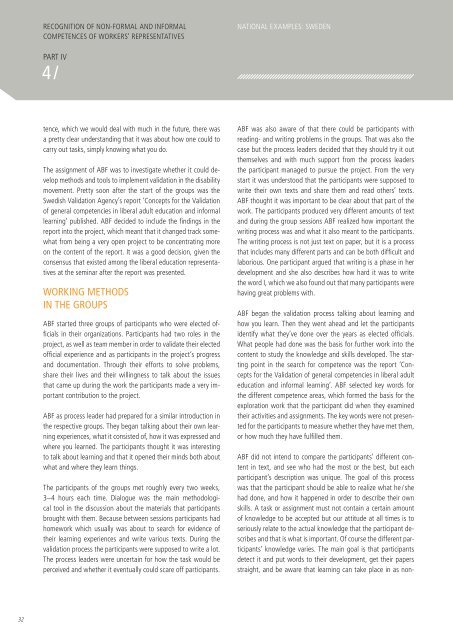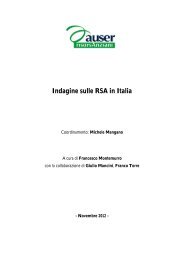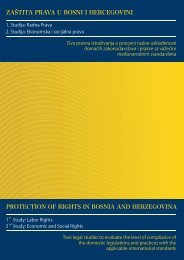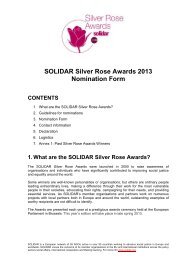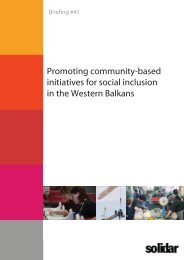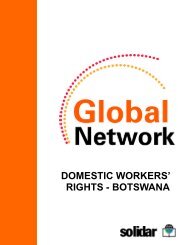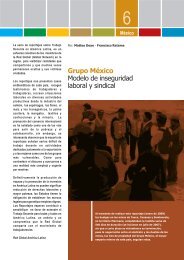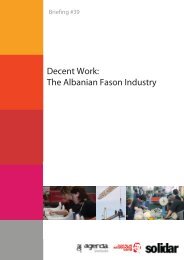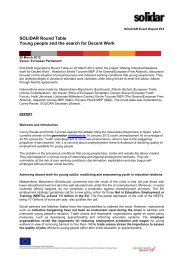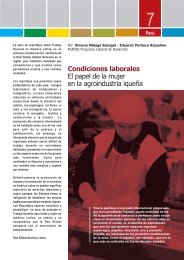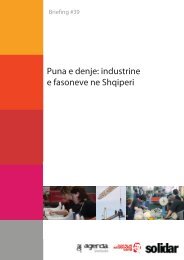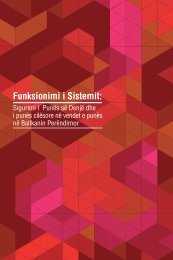RECOGNITION OF NON-FORMAL AND INFORMAL ... - Solidar
RECOGNITION OF NON-FORMAL AND INFORMAL ... - Solidar
RECOGNITION OF NON-FORMAL AND INFORMAL ... - Solidar
You also want an ePaper? Increase the reach of your titles
YUMPU automatically turns print PDFs into web optimized ePapers that Google loves.
<strong>RECOGNITION</strong> <strong>OF</strong> <strong>NON</strong>-<strong>FORMAL</strong> <strong>AND</strong> IN<strong>FORMAL</strong><br />
COMPETENCES <strong>OF</strong> WORKERS’ REPRESENTATIVES<br />
NATIONAL EXAMPLES: SWEDEN<br />
PART IV<br />
4 /<br />
ABF did not intend to compare the participants’ different content<br />
in text, and see who had the most or the best, but each<br />
participant’s description was unique. The goal of this process<br />
was that the participant should be able to realize what he / she<br />
had done, and how it happened in order to describe their own<br />
skills. A task or assignment must not contain a certain amount<br />
of knowledge to be accepted but our attitude at all times is to<br />
seriously relate to the actual knowledge that the participant describes<br />
and that is what is important. Of course the different participants’<br />
knowledge varies. The main goal is that participants<br />
detect it and put words to their development, get their papers<br />
straight, and be aware that learning can take place in as nontence,<br />
which we would deal with much in the future, there was<br />
a pretty clear understanding that it was about how one could to<br />
carry out tasks, simply knowing what you do.<br />
The assignment of ABF was to investigate whether it could develop<br />
methods and tools to implement validation in the disability<br />
movement. Pretty soon after the start of the groups was the<br />
Swedish Validation Agency’s report ‘Concepts for the Validation<br />
of general competencies in liberal adult education and informal<br />
learning’ published. ABF decided to include the fi ndings in the<br />
report into the project, which meant that it changed track somewhat<br />
from being a very open project to be concentrating more<br />
on the content of the report. It was a good decision, given the<br />
consensus that existed among the liberal education representatives<br />
at the seminar after the report was presented.<br />
WORKING METHODS<br />
IN THE GROUPS<br />
ABF started three groups of participants who were elected offi<br />
cials in their organizations. Participants had two roles in the<br />
project, as well as team member in order to validate their elected<br />
offi cial experience and as participants in the project‘s progress<br />
and documentation. Through their efforts to solve problems,<br />
share their lives and their willingness to talk about the issues<br />
that came up during the work the participants made a very important<br />
contribution to the project.<br />
ABF as process leader had prepared for a similar introduction in<br />
the respective groups. They began talking about their own learning<br />
experiences, what it consisted of, how it was expressed and<br />
where you learned. The participants thought it was interesting<br />
to talk about learning and that it opened their minds both about<br />
what and where they learn things.<br />
The participants of the groups met roughly every two weeks,<br />
3–4 hours each time. Dialogue was the main methodological<br />
tool in the discussion about the materials that participants<br />
brought with them. Because between sessions participants had<br />
homework which usually was about to search for evidence of<br />
their learning experiences and write various texts. During the<br />
validation process the participants were supposed to write a lot.<br />
The process leaders were uncertain for how the task would be<br />
perceived and whether it eventually could scare off participants.<br />
ABF was also aware of that there could be participants with<br />
reading- and writing problems in the groups. That was also the<br />
case but the process leaders decided that they should try it out<br />
themselves and with much support from the process leaders<br />
the participant managed to pursue the project. From the very<br />
start it was understood that the participants were supposed to<br />
write their own texts and share them and read others’ texts.<br />
ABF thought it was important to be clear about that part of the<br />
work. The participants produced very different amounts of text<br />
and during the group sessions ABF realized how important the<br />
writing process was and what it also meant to the participants.<br />
The writing process is not just text on paper, but it is a process<br />
that includes many different parts and can be both diffi cult and<br />
laborious. One participant argued that writing is a phase in her<br />
development and she also describes how hard it was to write<br />
the word I, which we also found out that many participants were<br />
having great problems with.<br />
ABF began the validation process talking about learning and<br />
how you learn. Then they went ahead and let the participants<br />
identify what they’ve done over the years as elected offi cials.<br />
What people had done was the basis for further work into the<br />
content to study the knowledge and skills developed. The starting<br />
point in the search for competence was the report ‘Concepts<br />
for the Validation of general competencies in liberal adult<br />
education and informal learning’. ABF selected key words for<br />
the different competence areas, which formed the basis for the<br />
exploration work that the participant did when they examined<br />
their activities and assignments. The key words were not presented<br />
for the participants to measure whether they have met them,<br />
or how much they have fulfi lled them.<br />
32


